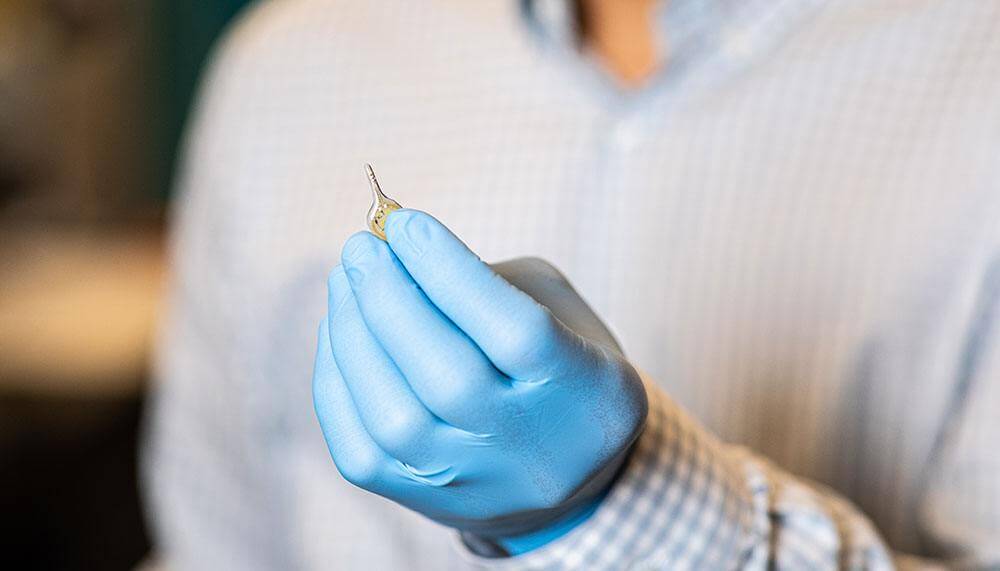Treating cancer is never easy, and performing surgery for colorectal cancer is even more complicated by its low success rate in preventing cancer from coming back. A recent study from researchers at Texas A&M University details an alternative option of using an implantable wireless device that kills leftover cancer cells during surgery.
The procedure involves surgeons removing a majority of the tumor and then fully irradiating the remaining tumor when the photosensitizer is activated by the light. The low-cost, minimally invasive LED device uses photodynamic therapy during surgery by using a drug activated by light to destroy colorectal cancer cells.
The drug is taken in by tumor cells which then release a wavelength that matches the absorption spectrum of the drug. Activating the drug causes a photochemical reaction that triggers tumor cell death. The combination treatment provides a safe and effective way with no toxic side effects.
“The biocompatible, miniaturized implantable LED device will enable light dosing and PDT that is tailored to the individual tumor response,” says Dr. Sung II Park, assistant professor in the Department of Electrical and Computer Engineering and researcher in the Center for Remote Health Technologies and Systems at the university, in a media release.
Looking ahead, the wireless device could treat multiple forms of cancer and improve the quality of life of those actively seeking treatment. “The intracavity device will provide a minimally invasive, biocompatible platform for light detection of residual cancers and delivery to tumor cells located in any part of the body, suggesting it could make an impact in the areas of breast, kidney, lung, pancreatic, prostate, ovarian and rare cancers,” Dr. Park says.
Because of its low cost, it would also save billions of dollars on oncology resources. In 2022, global oncology spending is projected to be $206 billion, a 23.35% increase from 2020.
The study is published in the journal Nature Communications.
